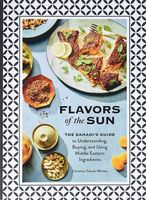Advertisement
Halvah
Appears in
Published 2021
This simple confection is basically just sesame seeds and sugar: the sugar is boiled to a syrup and then mixed with tahini paste until it has a fudge-like texture. In Middle Eastern homes, halvah is eaten with coffee as an afternoon treat. Nuts, especially pistachios, and chocolate are the most typical flavorings; Israel produces layered halvahs with layers of coating chocolate sandwiched between slabs of marbled, plain, or flavored halvah.
You will likely find two types of halvah when you go to purchase: imported, from the Middle East—Lebanon, Syria, Israel—and domestic halvah. Imported halvah is sticky and crumbly, with underlying tones of flower water. Because it is made from Middle Eastern tahini, which is whiter than American tahini, the halvah is paler than American-made, which has a more caramel color. Domestic halvah also has a lighter, more crumbly texture and is generally not made with flower water, for a purer sesame flavor. Most of what we sell is domestic unless it’s labeled imported or “imported style,” and we have our house-label halvah made locally, using our own pistachios, because, as in all things, we want what we want!

